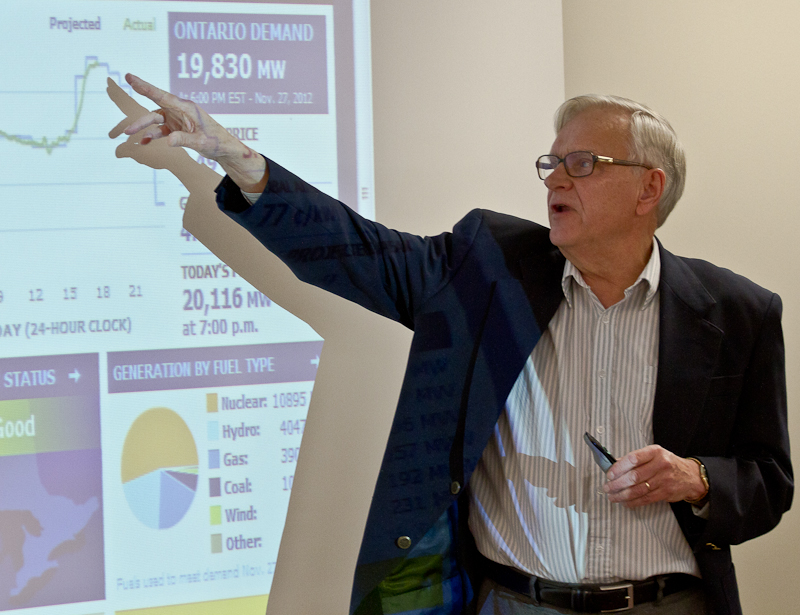
The question of whether nuclear energy remains a viable form of sustainable energy was addressed and debated Nov. 27 in the final part of a series of lectures.
The lecture was presented by Robert Morrison, former director general of Uranium and Nuclear Energy at Natural Resources Canada.
Organized by the Carleton Research Unit in Innovation, Science and the Environment (CRUISE) and the Carleton Sustainable Energy Research Centre (CSERC), the lecture was the 15th of its kind.
“The purpose of the lectures is to shine light on technologies, practices, policies that could help move us from the energy system that we have today, to the energy system that we need in the future,” said CSERC executive director Graham Campbell.
“That need is defined by sustainability.”
The lecture largely dealt with assessing the viability of nuclear energy following the explosion at the Fukushima reactor in Japan on March 11, 2011.
The Fukushima incident was a combination of a devastating tsunami that resulted in widespread destruction across the coastline, as well as the negligence of the Japanese authority, said Robert Morrison, guest speaker and former director of uranium and nuclear energy at Natural Resources Canada.
“It’s cited by some that the tsunami was unique and that the nuclear accident at the Fukushima plant was simply an add-on,” Morrison said. “And it was certainly not foreseen, neither by the nuclear authorities there, nor by the Japanese government generally.”
“There’s another reason given, and that is that Japanese culture and mindset left Japanese people negligent and unprepared,” Morrison added. “This is a report prepared for the Japanese parliament by Japanese experts that called it a disaster made in Japan.”
But Morrison praised the culture of safety present in Canadian nuclear facilities.
He addressed key environmental and economic benefits and costs of using nuclear power in Canada and highlighted the active nature of regulation and contingency plans the Canadian Nuclear Safety Commission has put in place.
“Nuclear has virtually no emissions of CO2 and no air pollution, and air pollution is probably a bigger political driver for political action than climate change,” Morrison said.
Morrison also looked at the costs of nuclear energy, including waste management and the public perception of nuclear energy.
Though Morrison highlighted the risks associated with nuclear waste management, he also noted the reduced quantity and increased regulation in comparison to regulation of fossil fuel emissions and cited Canada’s plan as a model of sustainable development.
The lecture was followed by a conversation and debate about the future of nuclear energy.
“I thought it gave a very good exposé of the waterfront of some of the issues and challenges facing nuclear energy, but for me what was more thought-provoking was the conversation afterwards with the audience,” said Paul Kearns, Carleton alumnus and employee at Natural Resources Canada.
“I thought there were some good points raised and it generated a good dialogue.”
According to Campbell, students can participate in future projects by the joint program offered at both the undergraduate and master’s level as well as by coming to the lectures.
“Challenge some of the speakers,” Campbell said. “Take them on, get them to address issues that are important to students and then take the next step to pursue these issues.”



